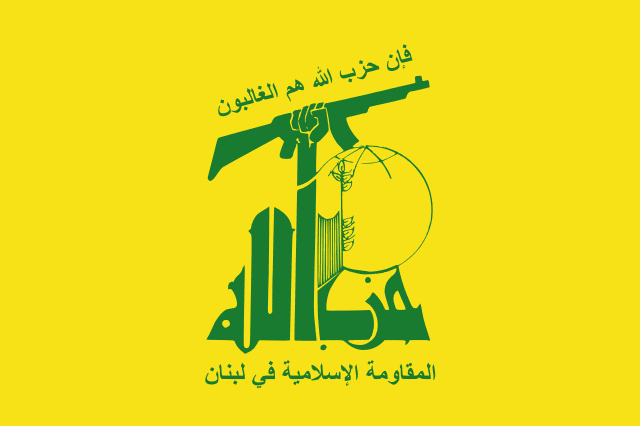The Iranian regime’s influence outside its borders began with Hezbollah, the terrorist group that controls Southern Lebanon. Hezbollah was founded in 1982 by followers of Iran’s supreme leader, putting his plan to export the Iranian Revolution to the world into action. About 1,500 soldiers from Iran’s Revolutionary Guard flew to Lebanon to recruit, advise, and train the new militia that became Hezbollah. From its very start, Iran was giving Hezbollah anywhere from $36 to $100 million a year. Hezbollah’s most infamous suicide bombings of the ’80s and ’90s—on the US Embassy in Beirut, the international peacekeepers barracks in Beirut, the Israeli Embassy in Buenos Aires, the Jewish Community Center in Buenos Aires, and US Air Force housing in Saudi Arabia—were all found to have been directly ordered by Iranian government officials and carried out with Iranian funding and equipment.
After Israel withdrew from Southern Lebanon in 2000, Iran helped Hezbollah drastically increase its rocket arsenal. During the Second Lebanon War in 2006, Hezbollah fired an unprecedented 4,000 rockets into Israel in one month. Qasem Soleimani, the top Iranian general, was even in Lebanon to advise Hezbollah during the war. For the following decade, Hezbollah invested its resources into regrouping militarily, strengthening its political party, entrenching itself throughout Lebanon, fighting in the Syrian Civil War alongside Assad, and committing and attempting sporadic terrorist attacks. During this time, Iran was sending Hezbollah around $400 million a year. In 2014, Iran delivered a new class of missiles to Hezbollah, long-range F-110 that could reach anywhere in Israel. The IRGC then built weapons factories in Lebanon and trained hundreds of Hezbollah specialists to build missiles locally.
2018 was marked by the exposure of the cross-border attack tunnels that Hezbollah had spent years digging from Southern Lebanon into Northern Israel with the intention of invading Israel and kidnapping and killing Israeli civilians. Hezbollah’s “Conquer the Galilee” attack plan was inspired, supported, advised, and funded by Iran. Soon after, the world discovered that Iran had sent equipment to Hezbollah to convert their short-range rockets into long-range precision-guided missiles, marking a new and more dangerous threat to Israelis than ever before. The IRGC even traveled to Lebanon again to help Hezbollah open and operate factories to produce PGMs on their own. By then, Iran had increased Hezbollah’s budget to over $700 million a year, making them Iran’s most highly funded proxy group by far.
Over the next few years, an increasingly emboldened Hezbollah once again began attacking and infiltrating Israel to brazenly gather intelligence and provoke the IDF. Iran built an airport in southern Lebanon to give Hezbollah a better launchpad for their Iranian-built drones. That brings us to the October 7th massacre. The day after Hamas carried out the deadliest attack on Jews since the Holocaust, Hezbollah began attacking Israel too, in a show of support for their fellow Iranian proxy. Since October 7th, Hezbollah has fired over 2,000 rockets, mortars, UAVs, and anti-tank missiles at Northern Israel. 61,000 Israeli civilians were evacuated from their homes due to Hezbollah’s continuous and increasing attacks. All of this was made possible by decades of support, arms, training, and several billion dollars from the Iranian regime. Today, Hezbollah is the most heavily armed non-state actor in the world, and their entrenchment in Lebanon has enabled Iran to maintain a direct presence on two sides of Israel’s border. The Hezbollah-Iran alliance is just one part of Iran’s axis of terror and ongoing attempts to destabilize the Western world.
Hezbollah
Hezbollah, established in 1982, has grown from a small militia to a formidable political-military entity in the Middle East. Under the leadership of Hassan Nasrallah, Hezbollah has become a significant regional actor, particularly in Lebanon, where its military, political, and ideological activities have profound implications for regional security, especially concerning its tension with Israel.
Ideology
Hezbollah’s ideology is rooted in Shiite radicalism, with key objectives including the establishment of an Islamic Republic in Lebanon, the elimination of Israel through armed struggle, and resistance against American hegemony and capitalist forces. These goals are detailed in Hezbollah’s manifestos from 1985 and 2009.
Official Flag

Order of Battle
Hezbollah commands approximately 50,000 to 100,000 fighters, including 20,000 active duty troops and 25,000 reservists. The elite Radwan Unit, comprising thousands of operatives, plays a crucial role in the group’s strategic operations, including incursions into Israeli territory.
Budget
Hezbollah’s annual budget exceeds 700 million dollars, with substantial financial, military, and intelligence support from Iran.
Arsenal
Hezbollah’s arsenal includes an estimated 120,000 to 130,000 missiles, sophisticated anti-tank weapons, dozens of UAVs, advanced anti-ship missiles, and aerial defense systems. This vast stockpile makes Hezbollah one of the world’s most powerful non-state military actors.
More resources
Hezbollah Doesn’t Want You To Watch This
The IDF launched a defensive operation against Hezbollah to thwart imminent attacks and protect Israeli civilians from harm.
Behind the Flag of Hezbollah
Have you seen this flag around lately? Do you recognize it? Do you know what it stands for?
32 Years of Nasrallah’s Reign Over Hezbollah
Hassan Nasrallah, Hezbollah’s leader for 32 years, hides in a bunker, funds terrorism via drug trafficking, and maintains strong Iran ties.
A Global Threat: Hezbollah
Hezbollah, with 100,000 fighters and 200,000 rockets, endangers Lebanese civilians and funds terrorism through global illicit activities.
5 Ways Hezbollah Violated UN Resolution 1701
Hezbollah has violated UN Resolution 1701 since 2006 by amassing illegal weapons, smuggling arms, and endangering civilians in Lebanon.
Hezbollah: Terror Since 1982
Hezbollah, a terrorist organization founded in 1982, has committed numerous attacks worldwide, primarily targeting Americans and Israelis.
